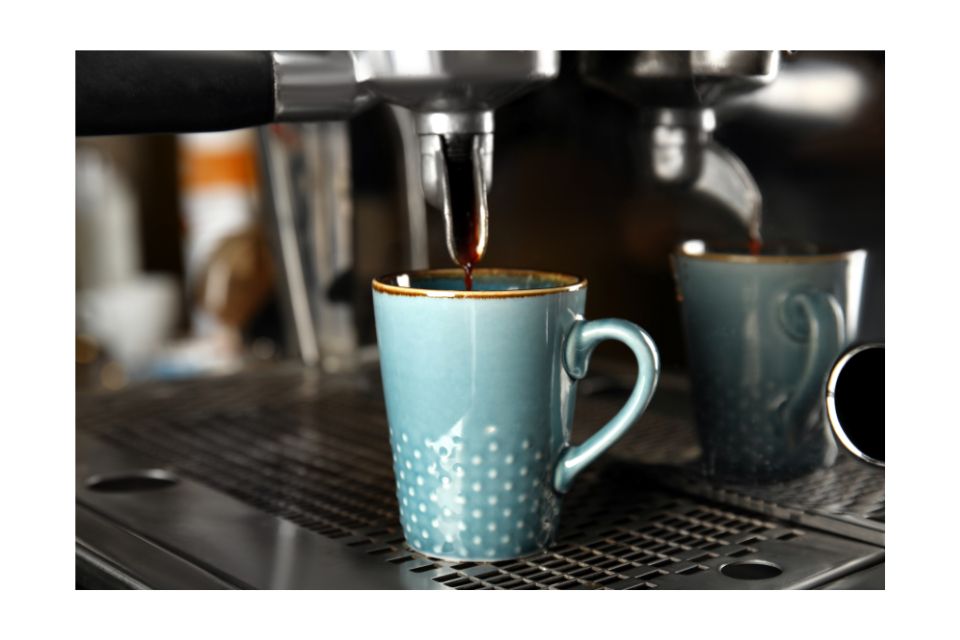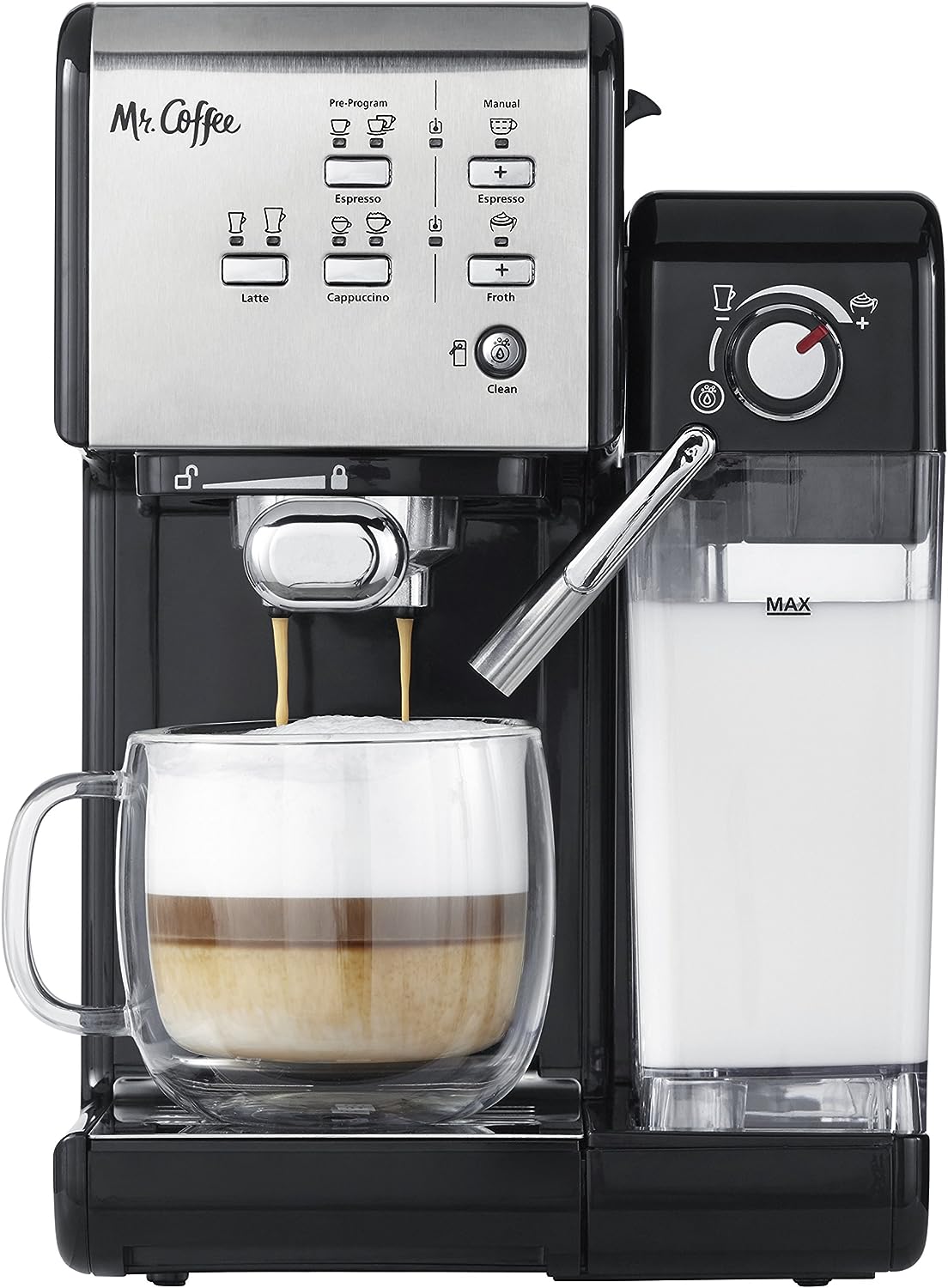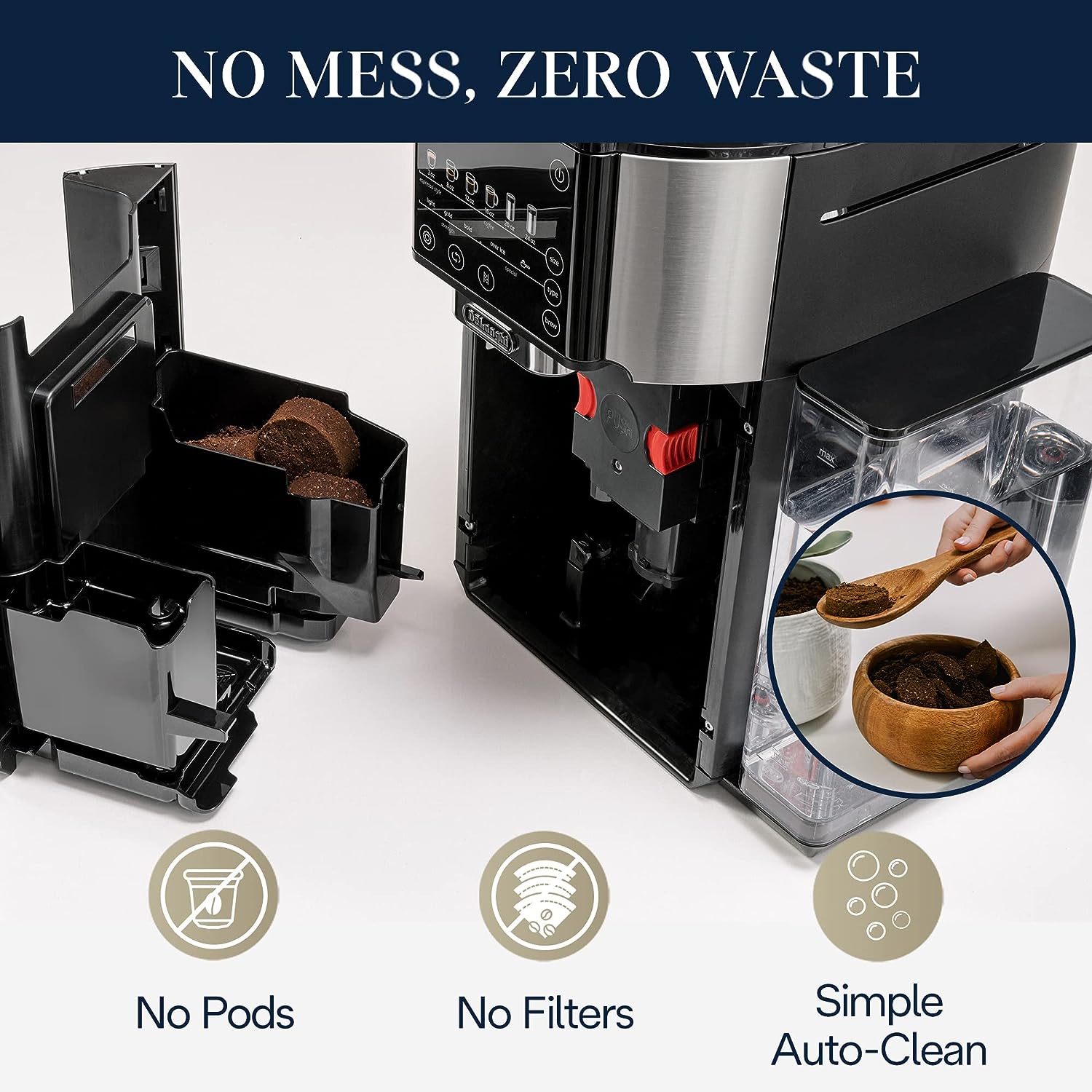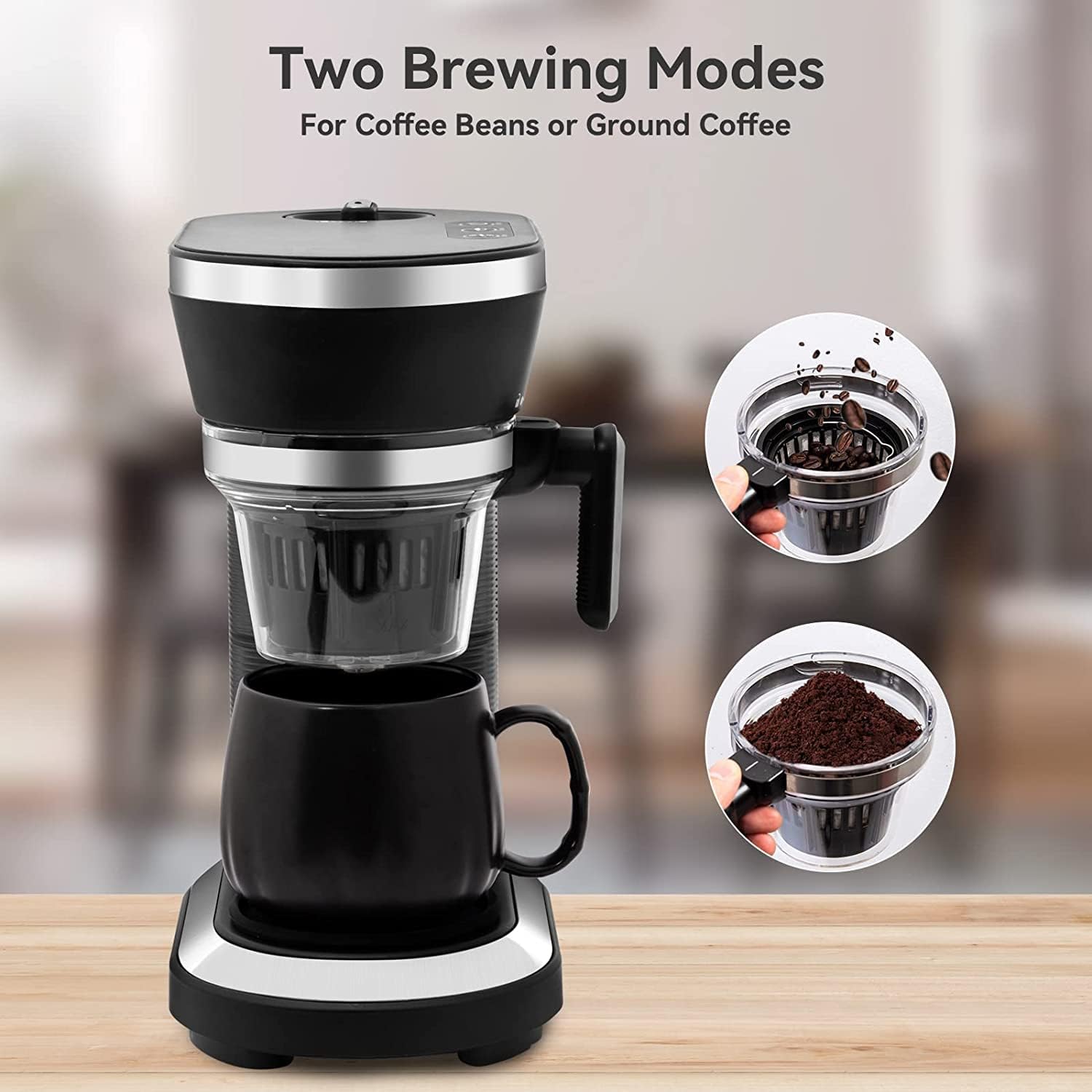Introduction
Are you an espresso lover looking to expand your brewing options at home? You might be wondering if it’s possible for your trusty espresso machine to whip up a regular cup of coffee too.
The answer is Yes!
While these machines are designed primarily for crafting exquisite shots of concentrated espresso, the good news is that they can indeed make something resembling your traditional drip coffee with a few adjustments.
So, sit back and relax as we delve into the fascinating world of using espresso machines for regular coffee and how you can achieve that perfect cup without having to invest in multiple appliances.
Key Takeaways
- Espresso machines can make regular coffee by adjusting water and coffee ratios, using a filter basket or pod system, and understanding the differences in brewing methods.
- While espresso machines offer convenience and versatility in making different types of coffee beverages, they have limitations when it comes to producing large quantities of regular coffee.
- Using an espresso machine for regular coffee can result in a different taste and texture compared to traditional drip coffee makers due to the brewing method, but adjustments can be made to achieve similar results.
- Ultimately, whether you choose to use an espresso machine or a drip coffee maker for your daily caffeine fix depends on personal preference and brewing needs.
Making Regular Coffee With An Espresso Machine
To make regular coffee with an espresso machine, it is important to understand the differences in brewing methods and adjust the water and coffee ratios for preferred strength, using a filter basket or pod system.
Understanding The Differences In Brewing Methods
Understanding the differences in brewing methods is crucial for espresso beginners, as it helps to determine which method best suits their taste preferences and desired coffee experience.
The two primary ways of making coffee are drip coffee brewing and espresso brewing. Drip coffee, also known as filter coffee, involves water gradually seeping through a bed of ground coffee beans, extracting flavors in a more extended process that usually results in a mild brew with low acidity.
On the other hand, espresso brewing requires forcing hot water under high pressure through fine-ground beans within 20-30 seconds, producing an intense and concentrated beverage with rich flavors and crema on top.
This method is primarily used by classic manual or superautomatic espresso machines like Breville Barista Express or Nespresso machine varieties.
Using A Filter Basket Or Pod System
When using an espresso machine to make regular coffee, you can use a filter basket or pod system. With the filter basket, simply fill it with fine ground coffee and place it into the portafilter.
Pack the coffee down firmly before locking it in place and starting your machine as usual. On the other hand, a pod system is more convenient for those who may not have time to grind their beans or prefer less mess.
Simply insert the coffee pod into its designated slot on your machine and press start. However, keep in mind that while pods are easy to use, they can be more expensive than buying ground coffee or whole beans.
Adjusting Water And Coffee Ratios For The Preferred Strength
To achieve your preferred strength when making regular coffee with an espresso machine, you need to adjust the water and coffee ratios. The general rule is that more water will make the coffee weaker while less water will produce a stronger cup of joe.
Espresso machines have different settings for this purpose, so it’s essential to read the instructions carefully or seek guidance from a barista. For example, if using pre-ground coffee, use two tablespoons of ground coffee per six ounces of hot water for a standard drip coffee-like drink.
However, remember that every roast has its unique flavor profile and caffeine content; therefore, experiment to find what works best for you.
Limitations Of Using Espresso Machines For Regular Coffee
Espresso machines are not designed to produce large quantities of regular coffee and require additional steps like adding hot water or using add-ons like a filter basket or pod system.
Not Designed For Large Quantities
One of the limitations of using an espresso machine for regular coffee is that it’s not designed for making large quantities. Espresso machines are meant to produce small shots of espresso, and making multiple cups of regular coffee with an espresso machine can be time-consuming.
While some dual-purpose machines have a larger water reservoir and filter basket to make more significant amounts, these are often costly and may not provide the same quality as a traditional drip coffee maker.
Instead, consider investing in a drip coffee maker or French press for brewing larger quantities at once. These methods can produce consistent results and require minimal effort while delivering rich, flavorful coffee.
Requires Additional Steps And Add-ons
Using an espresso machine to make regular coffee requires a few additional steps and add-ons. Here are some of the things you need to keep in mind:
- You’ll need to use a larger filter basket or pod system designed for making regular coffee.
- Adjusting the water-to-coffee ratio is crucial for getting the right strength and flavor.
- Regular pre-ground coffee can be used, but it needs to be fine-grind like espresso.
- Some machines come with built-in grinders, which can make this process easier.
- Adding hot water to an espresso shot creates an Americano, which is similar to regular coffee.
- Milk frothers may not be necessary for making regular coffee but can be useful if you want to make cappuccinos or lattes.
By following these steps and understanding their importance, you can use your espresso machine to enjoy a delicious cup of regular coffee. Remember that while it may take some extra effort compared to using a drip coffee maker, the convenience and versatility of an espresso machine make it worth considering.
How do you make a full cup of coffee with an espresso machine?
H3: Understanding the Basics: Difference Between Espresso and Coffee
Creating a full cup of coffee with an espresso maker may seem complex, but it’s quite a straightforward process if you understand the difference between espresso and coffee. The primary difference lies in the grinding of the coffee, the quantity of coffee used, and the way the water is used to make the beverage.
When you visit your local coffee shop, you may have noticed that the coffee grounds used to make regular coffee are coarser than those used for espresso. This is because an espresso machine requires finely ground coffee beans, unlike a drip brew coffee machine, which uses more coarse coffee grounds. If you’re trying to make regular coffee in an espresso machine, it’s best to use a dark roast coffee, similar to drip coffee.
The process of making espresso involves forcing hot water through the coffee grinds under high pressure. An espresso is made by pushing a small quantity of hot water through finely-ground coffee, resulting in a concentrated form of coffee. This strong espresso shot is the foundation of many coffee drinks such as cappuccino and latte that many coffee shops offer.
H3: Making Regular Coffee with an Espresso Machine: The Americano
However, to make a traditional cup of coffee or, in coffee shop lingo, a regular cup of joe, the best way to make this coffee in an espresso machine is by making an Americano. An Americano is essentially a shot or two of espresso with added hot water, making it similar to drip coffee in taste and caffeine content.
Normal coffee, or drip brew coffee, involves pouring hot water over the coffee grounds and allowing the water to extract the coffee over time. The espresso and drip brewing methods highlight the coffee in different ways, enhancing different varieties of coffee.
H3: Key Factors for Brewing Coffee at Home with an Espresso Machine
Can you use regular coffee beans in an espresso machine? Technically yes, but the result may not be as pleasing as if you used coffee beans designed to brew coffee in an espresso machine.
So, in the morning, when you’re searching for coffee and want a full cup, remember you can’t make a typical drip coffee with an espresso maker, but you can make specialty drinks and Americanos, which taste similar to the coffee you love.
Ultimately, the key to great coffee at home lies in the beans and how they are ground. Coffee grinder selection is crucial; you want a grind that’s just right – not too fine, not too coarse. Freshly ground coffee always makes the best espresso and coffee. So whether you’re making espresso or coffee in your espresso machine, remember, grinding your coffee correctly is the first step towards that perfect cup.
Conclusion: Pros And Cons Of Using An Espresso Machine For Regular Coffee
Using an espresso machine to make regular coffee has its advantages, such as convenience and versatility in making other coffee beverages. However, there are also limitations due to the machine’s small capacity and additional steps required.
Differences In Taste And Texture
Using an espresso machine to make regular coffee can result in a different taste and texture compared to using a drip coffee maker. The brewing method of an espresso machine produces concentrated, bold-flavored coffee with a thick layer of crema on top.
This is due to the high pressure used during extraction.
However, by adjusting water and coffee ratios and using the right type of grind for regular coffee, it is possible to achieve a drink similar in taste to traditional drip coffee.
Additionally, using an Americano method where hot water is added to an espresso shot can also produce a comparable tasting cup of regular coffee from your espresso machine.
Convenience And Versatility Of Using An Espresso Machine For Regular Coffee.
Using an espresso machine for regular coffee has its own set of advantages. For one, it offers a more compact and efficient way of brewing coffee that saves time, counter space, and energy consumption.
Moreover, espresso machines provide greater control over the intensity and flavor profile of your brew. With programmable settings on some models or manual adjustments like water temperature and pressure on others, you have the power to experiment with different brewing methods until you find your preferred taste and texture.
FAQs:
1. Can I use my espresso machine to make regular coffee?
Yes, you can use an espresso machine to make regular coffee by adjusting the settings and using a coarser grind or pre-ground coffee that is suitable for drip brewing.
2. Do I need any special equipment to make regular coffee with my espresso machine?
No, all you need is your espresso machine and some ground coffee suitable for drip brewing. You may also want to have a separate filter basket or portafilter specifically designed for making regular coffee.
3. How does the taste of regular coffee made from an espresso machine compare to traditional drip-brewed coffee?
The taste of regular coffee made on an espresso machine can vary depending on the type of beans used and how it’s brewed but in general, it tends to be richer, fuller-bodied, and stronger than traditional drip-brewed coffee.
4. Is there anything else I should know about making regular coffee with my espresso machine?
It’s important to pay attention to the flow rate when making regular coffee as this can impact flavor – aim for at least 20 seconds extraction time per shot (about 30ml) if possible or adjust according to user preferences one cup at a time until the desired balance is achieved.Water temperature also plays a role – keep it between 195-205°F (90-96°C) range within specifications recommended by the manufacturer handbook as well as experimenting around personal tastes/preferences until finding the best fit that works consistently over time without complications arising out of improper heating/melting materials/other factors affecting drink quality long term




